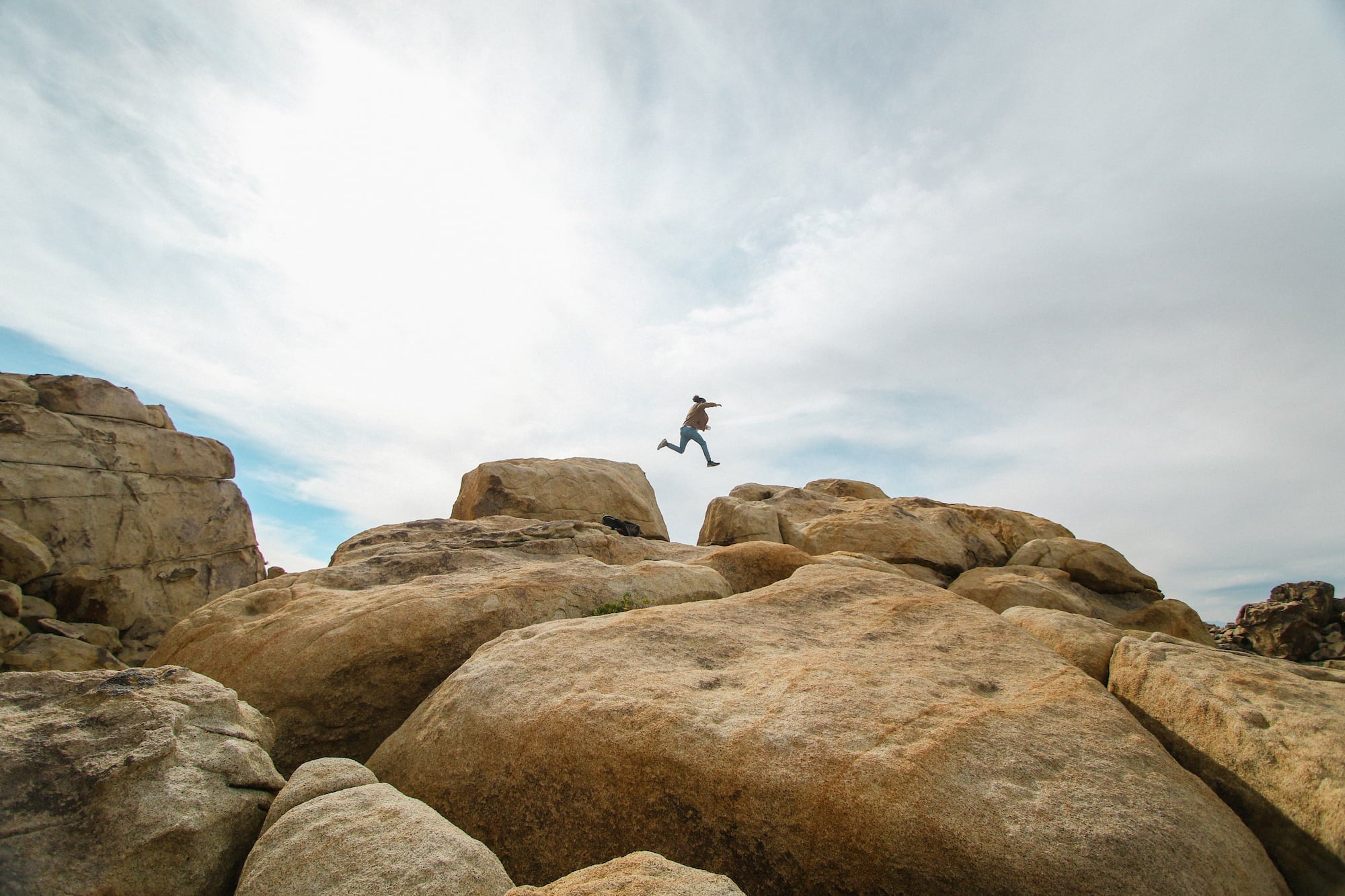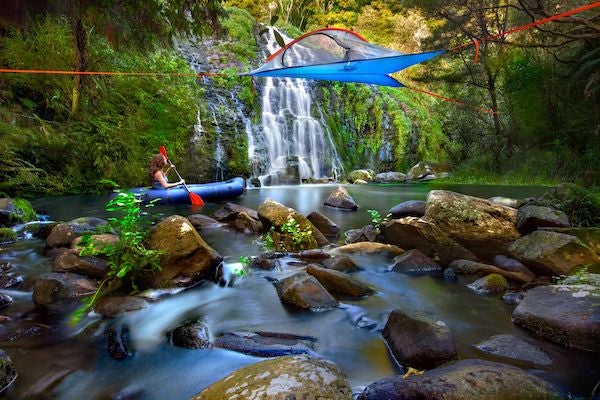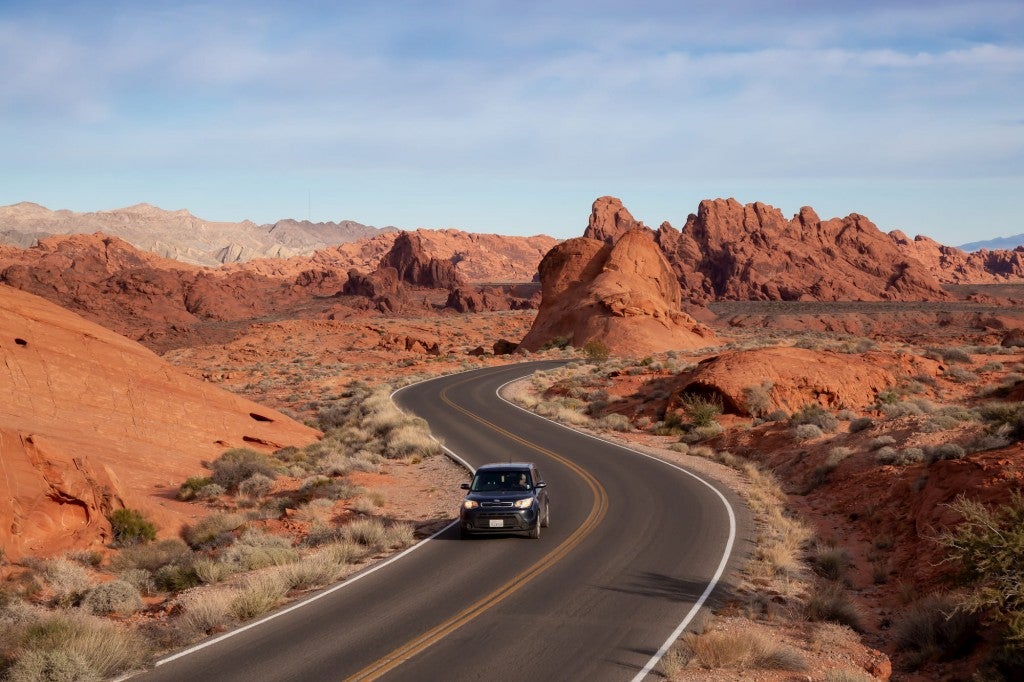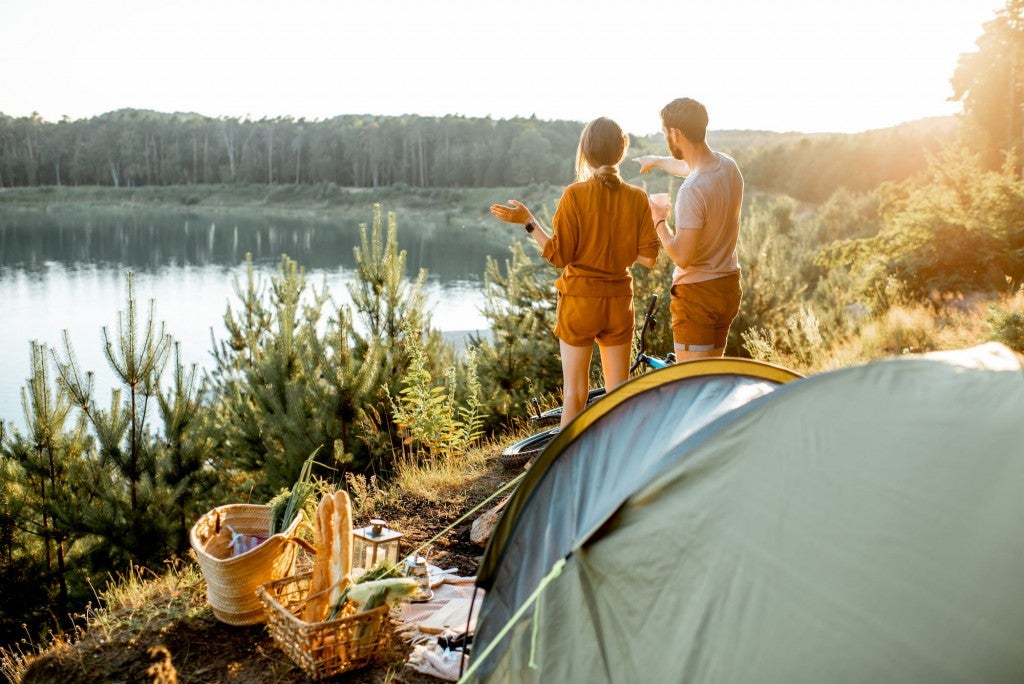This collection of Joshua Tree hikes is brought to you by Tentsile, makers of incredible tree-mounted products that let you sleep in style, suspended off the ground. Offering one-person tents, double hammocks, six-person tents, and everything in between – their showstopping products are great for backpackers & family campers alike.
Viewed from the roadside, Joshua Tree National Park appears barren and void of life except for the twisted branches and spiky leaves of the park’s signature Joshua Trees. But closer examination reveals a wonderland of rare desert plants, lively wildlife, and curious rock formations. That’s why Joshua Tree National Park is best explored on foot; the countless Joshua Tree hikes available to travelers include short, family-friendly nature trails and longer excursions to abandoned gold mines, hidden oases, and much more.
7 of the Best Joshua Tree Hikes For A Desert Getaway
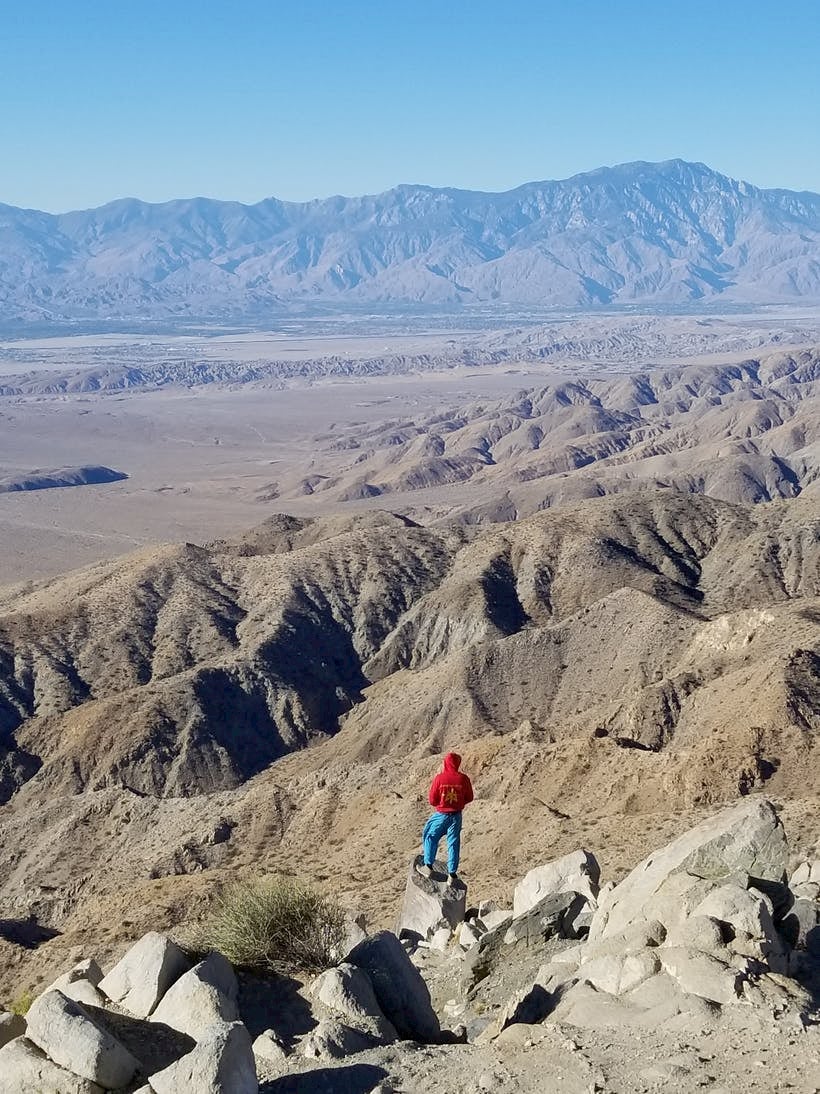
Image from The Dyrt camper Roxy V.
Before planning a trip to do any of the park’s famous hikes, consider finding a basecamp for your adventure first. Campgrounds tend to fill quickly in Joshua Tree National Park from October through May, so securing a site for your Joshua Tree hikes can sometimes be a challenge. Reserve sites ahead of time online if you can or visit the campgrounds early in the morning to nab one of the first-come, first-served sites. If no sites are available in the park, check out the nearby BLM camping Joshua Tree options or for some true desert solitude, visit Owl Canyon.
1. Hidden Valley Nature Trail
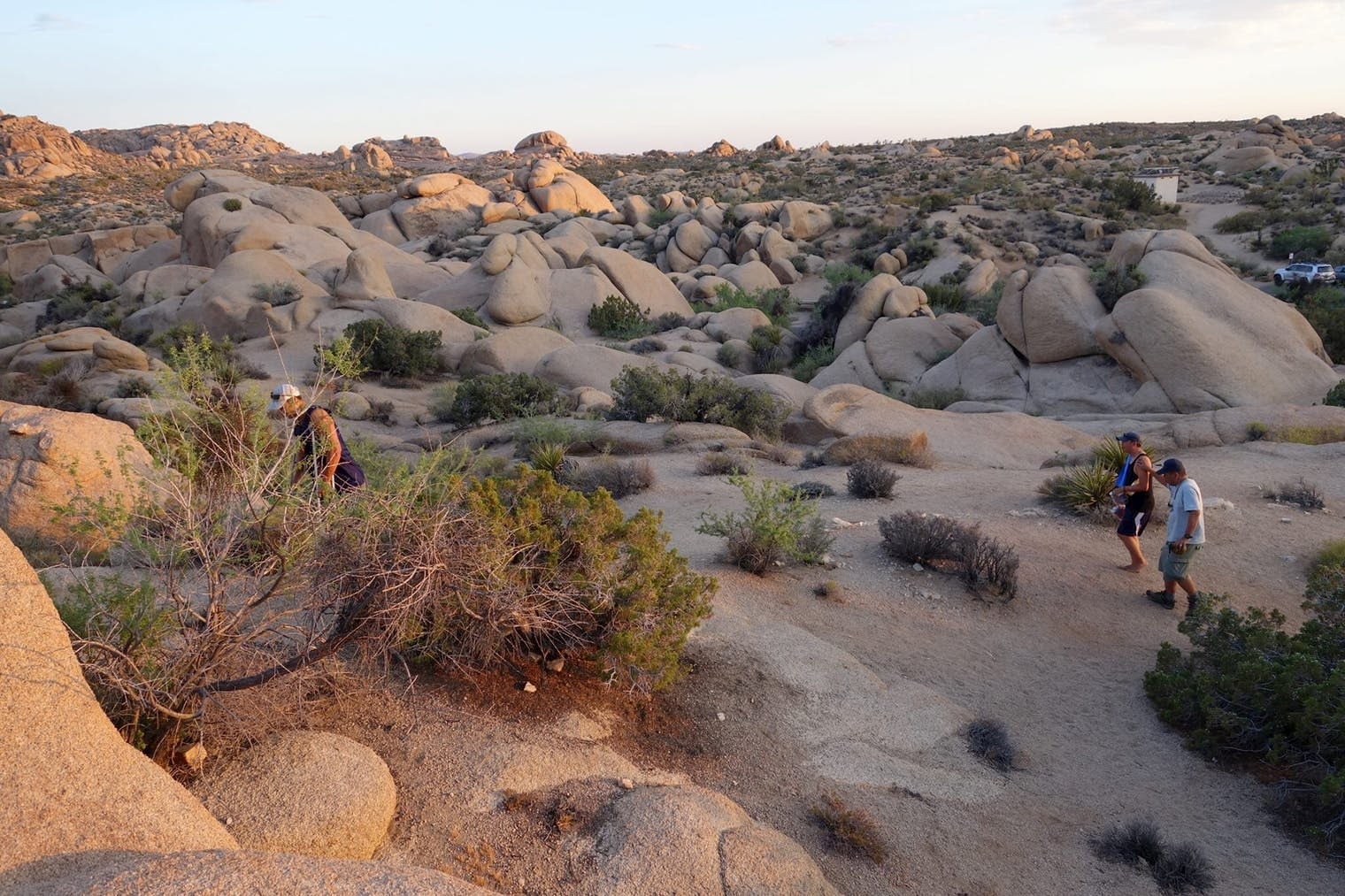
Image from The Dyrt camper Kuo G.
Once used as a hideout for 19th-century cattle rustlers, Hidden Valley is one of the most popular Joshua Tree hikes and for good reason. From the trailhead, this 1-mile loop trail quickly passes through a gap in the rocks to reveal a secluded valley filled with massive boulders, unique cacti, and other flora not found elsewhere in the park. Signs along the way point out the history and geology of the area and there’s some easy boulder scrambling and caves for kids to explore.
The Hidden Valley Nature Trail is located right across the street from the Hidden Valley Campground and adjacent the Hidden Valley Picnic Area.
2. Cholla Cactus Garden Trail
The Cholla Cactus Garden Trail is a flat, 0.25 mile loop trail that winds through a landscape of Cholla cacti. Often called “Teddy Bear Cactus” for its deceptively soft and cuddly appearance, Cholla is also nicknamed the “jumping cactus” because its barbed spines appear to jump off the plant and onto the skin or clothing with just the slightest brush up against the cactus. This is one of the few spots where Cholla grow in the park, and it is especially beautiful when much of the vegetation is in bloom at this elevation in March and April.
The White Tank Campground is the closest campground to the Cholla Cactus Garden Trail.
3. Cap Rock Nature Trail
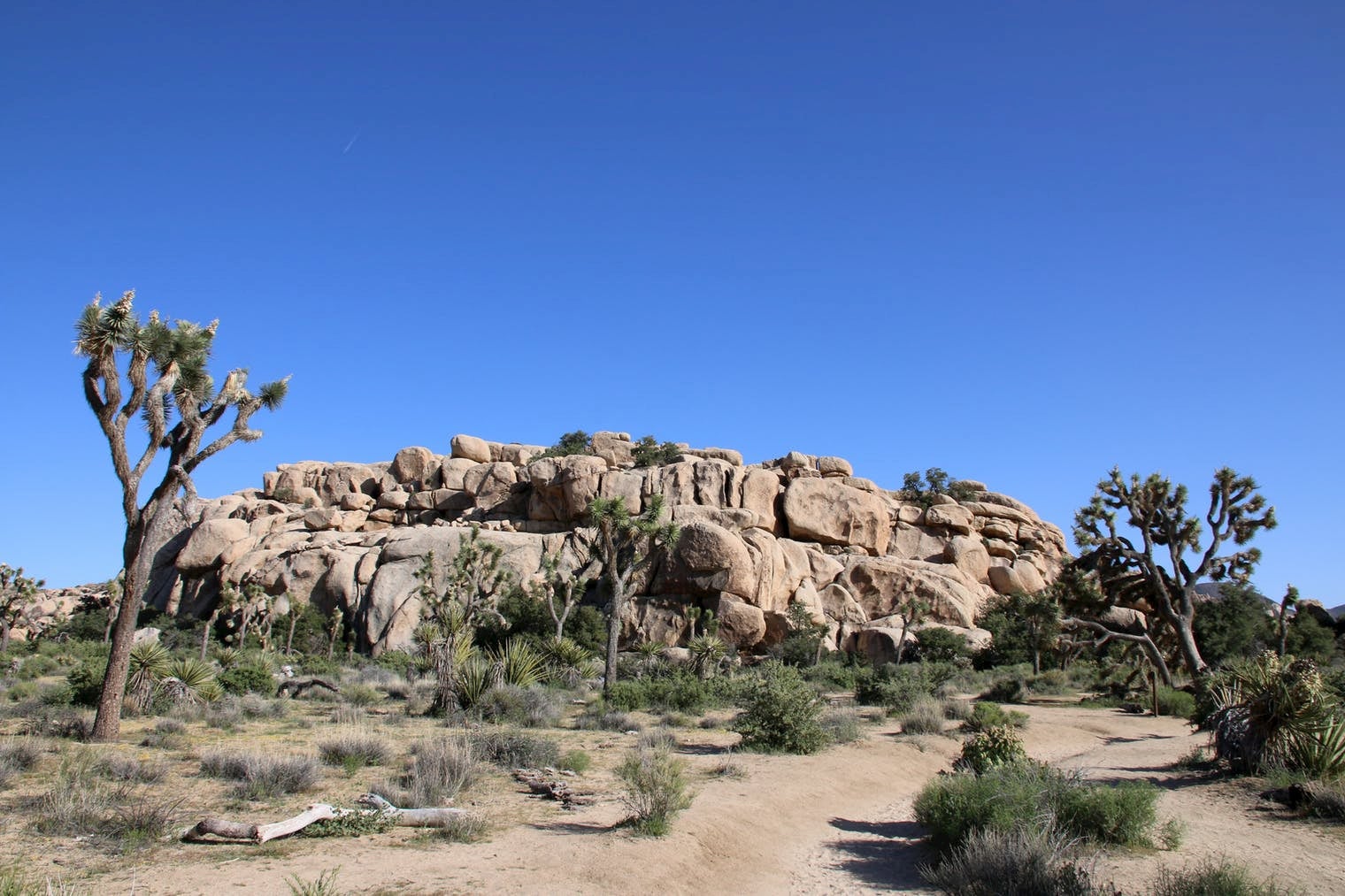
Image from The Dyrt camper Alex R.
The Cap Rock Nature Trail is one of the best family-friendly Joshua Tree hikes. This 0.4-mile loop passes through a landscape of Joshua Trees and interesting rock formations including the precariously-balance Cap Rock. Signs along the trail point out the unique flora and geology of the area and the adjacent picnic area is a great spot to enjoy lunch and watch rock climbers ascend the face of Cap Rock.
The closest campground to the Cap Rock Nature Trail is the Ryan Campground and all 31 sites are available on a first-come, first-served basis.
4. Lost Horse Mine Loop
The Lost Horse Mine Trail follows an old wagon road two miles to the ruins of the Lost Horse Mine. In operation between 1894 and 1931, the Lost Horse Mine was one of the area’s most successful mining operations producing more than 10,000 ounces of gold and 16,000 ounces of silver. The remnants of the mining operation are very well-preserved and include a steam engine, settling tanks, multiple stone foundations, and various mining artifacts scattered about. You can return the way you came or continue on the 6.4-mile loop trail to the summit of Lost Horse Peak before arriving back at the trailhead. If you find abandoned gold mines intriguing, you may also want to check out the Calico Ghost Town or Holcomb Valley located about 2 hours north of the park.
5. Ryan Mountain Trail
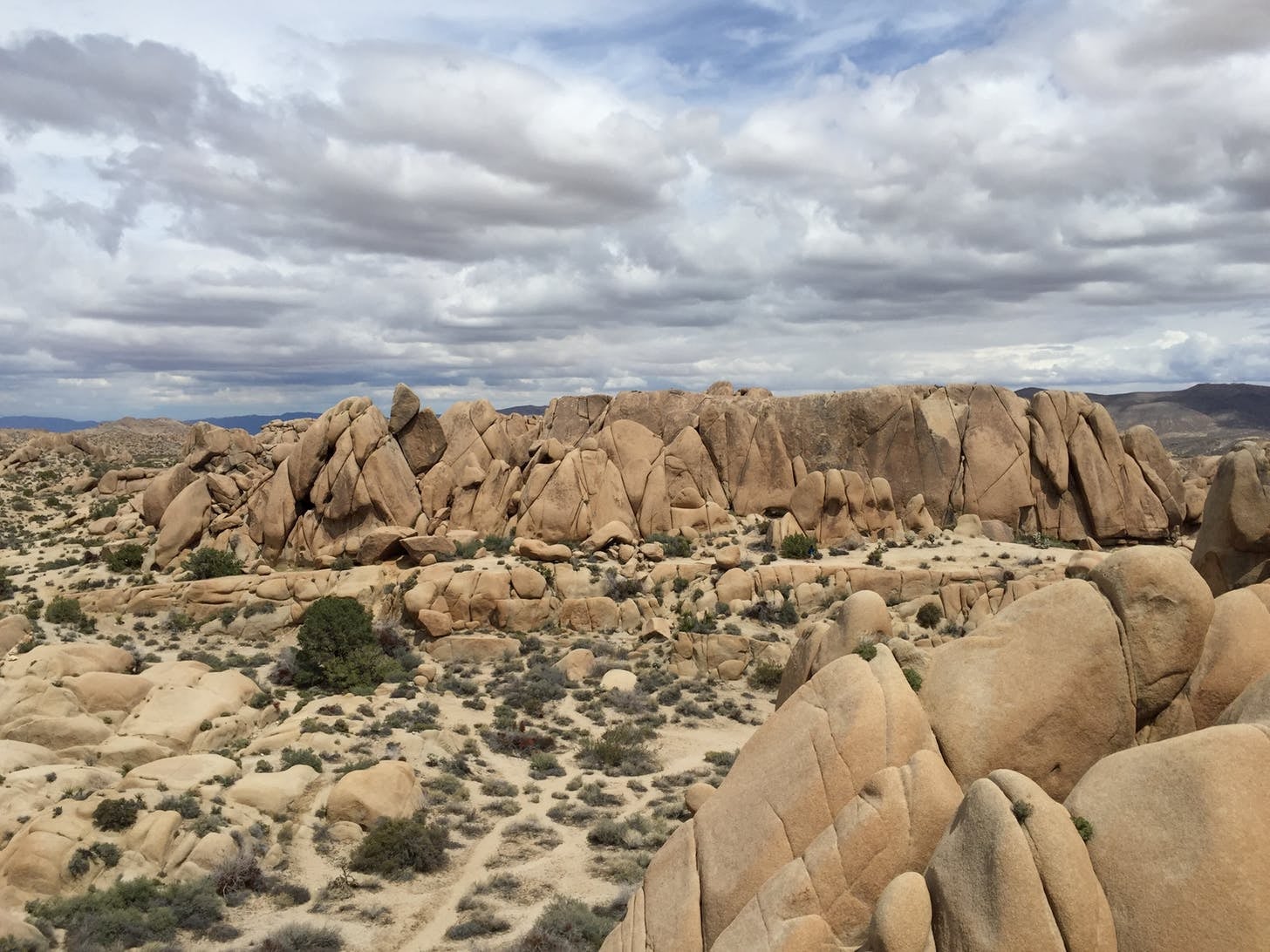
Image from The Dyrt campground Zack R.
It is only 1.5 miles to the top of Ryan Mountain, but the climb is steep and sustained gaining over 1,000 feet of elevation along the way. Your efforts will definitely be rewarded at the summit with endless panoramas of the park as well as views west across the Coachella Valley and the San Bernardino Mountains to the northwest. There is very little shade on the trail so don’t forget sunscreen and a hat, or go at sunrise or sunset for a truly memorable experience.
Stay at the nearby Ryan Campground or Jumbo Rocks for easy access to the trail.
6. Barker Dam Nature Trail
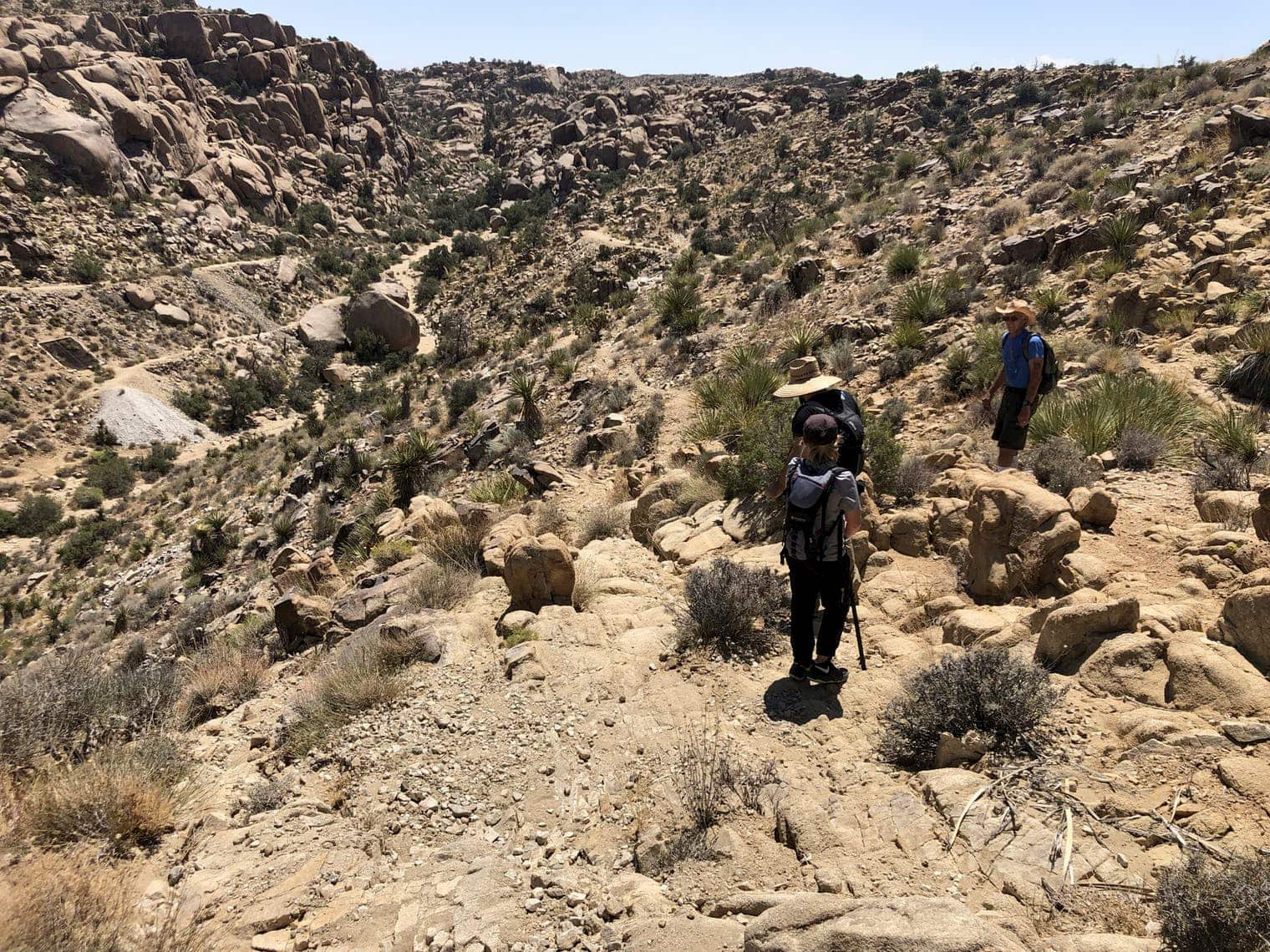
Image from The Dyrt camper Justin B.
Barker Dam is a popular spot for viewing wildlife and one of the few places in the park you’ll find an open body of water. Originally constructed in the year 1900 by ranchers to provide a consistent water source for their stock animals, the Barker Dam is now a popular watering hole for native animals including Desert Bighorn Sheep and migratory birds. The Barker Dam Nature Trail is an easy 1.1-mile loop with very little elevation gain and a short spur trail leads to a small rock cave with a good assortment of petroglyphs.
The Barker Dam Nature Trail is located in the western corner of the park, less than 2 miles from the Hidden Valley Campground.
7. Lost Palms Oasis Trail
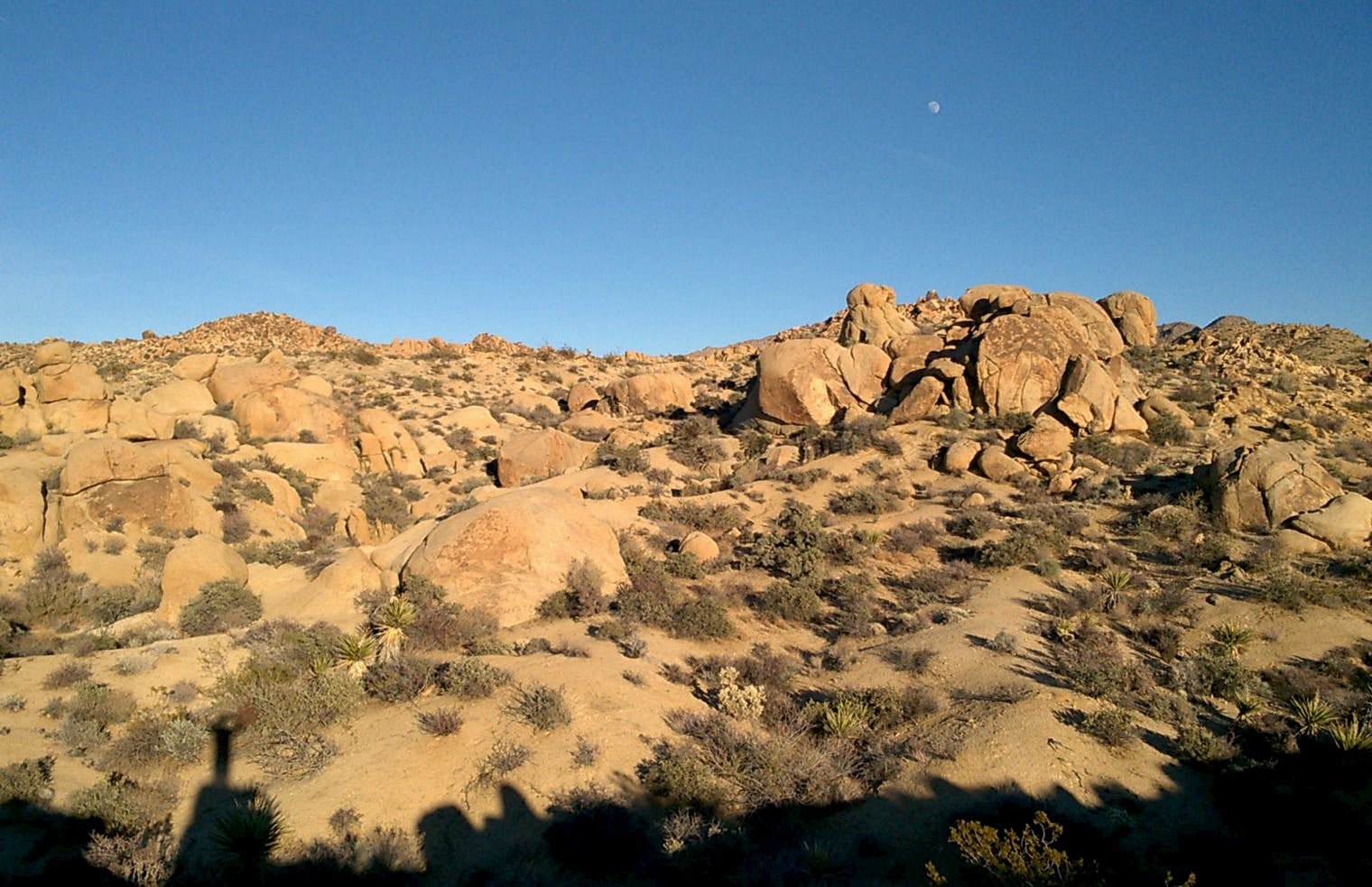
Image from The Dyrt camper Robert A.
The Lost Palms Oasis Trail is one of the more challenging hikes in Joshua Tree National Park. This 7.4-mile out-and-back trail follows a series or rolling hills and washes before descending to the canyon bottom to Lost Palms Oasis, one of the largest stands of fan palm trees in the park. Climbing back out of the canyon is strenuous so the hike is not recommended in hot weather.
The hike begins at the Cottonwood Springs Trailhead just past the Cottonwood Campground in the south end of the park.
Popular Articles:
Articles on The Dyrt Magazine may contain links to affiliate websites. The Dyrt receives an affiliate commission for any purchases made by using such links at no additional cost to you the consumer.

